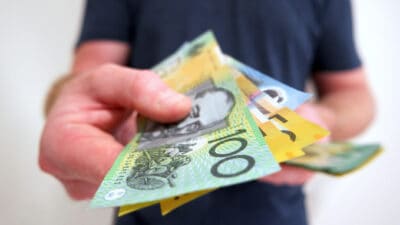After closing up 1.4% on Tuesday, the S&P/ASX 200 Index (ASX: XJO) looks ready to give back most of those gains today.
The benchmark index was down 0.5% at 11.30am AEST.
Then, the Australian Bureau of Statistics (ABS) released May's Australian inflation data.
In the minutes after the latest consumer price index (CPI) figures hit the wires, the ASX 200 tumbled another 0.6% to be down 1.1% in intraday trading at the time of writing.
Here's why investors just got a case of the jitters.
What's pressuring the ASX 200?
Investors, mortgage holders, and many other Aussies have been holding their breath in hopes that the Reserve Bank of Australia (RBA) will cut the official interest rate from the current 4.35% after hiking 13 times since May 2022.
But May's inflation print looks to have not only pushed any potential interest rate cuts into 2025 but also may have opened the door to another RBA rate hike. And that's not what ASX 200 investors were hoping to hear.
Consensus forecasts were for Aussie inflation to reach 3.8% on an annualised basis, up from 3.6% in April.
National Australia Bank Ltd (ASX: NAB) was slightly more optimistic, earlier this week forecasting a 3.6% year-on-year inflation increase.
Unfortunately, as you can guess by the big drop in the ASX 200, the data surprised to the upside.
According to the latest data from the ABS, the monthly CPI indicator rose 4.0% in the 12 months to May.
Commenting on the uptick in inflation, Michelle Marquardt, ABS head of prices statistics, noted that underlying inflation, which takes out volatile items, edged lower.
According to Marquardt:
CPI inflation is often impacted by items with volatile price changes like automotive fuel, fruit and vegetables, and holiday travel. It can be helpful to exclude these items from the headline CPI to provide a view of underlying inflation, which was 4.0% in May, down from 4.1 per cent in April.
The biggest contributors to the increase in CPI inflation in May were housing (up 5.2%), food and non-alcoholic beverages (up 3.3%), transport (up 4.9%), and alcohol and tobacco (up 6.7%).
And inflation might have run even higher if not for government energy rebates.
"The introduction of the Energy Bill Relief Fund rebates from July 2023 has mostly offset electricity price rises from annual price reviews in the same month," Marquardt said. "Excluding the rebates, electricity prices would have risen 14.5% in the 12 months to May 2024."
With those rebates factored in electricity prices rose 6.5% in the 12 months to May, up from 4.2% in April.
But don't go selling all your stocks just yet!
Despite sticky inflation and interest rates at levels not seen since 2011, the ASX 200 has gained 10% over the past 12 months. If you're not sure which ASX stocks have the best potential in the current economic environment, be sure to get some expert advice.









